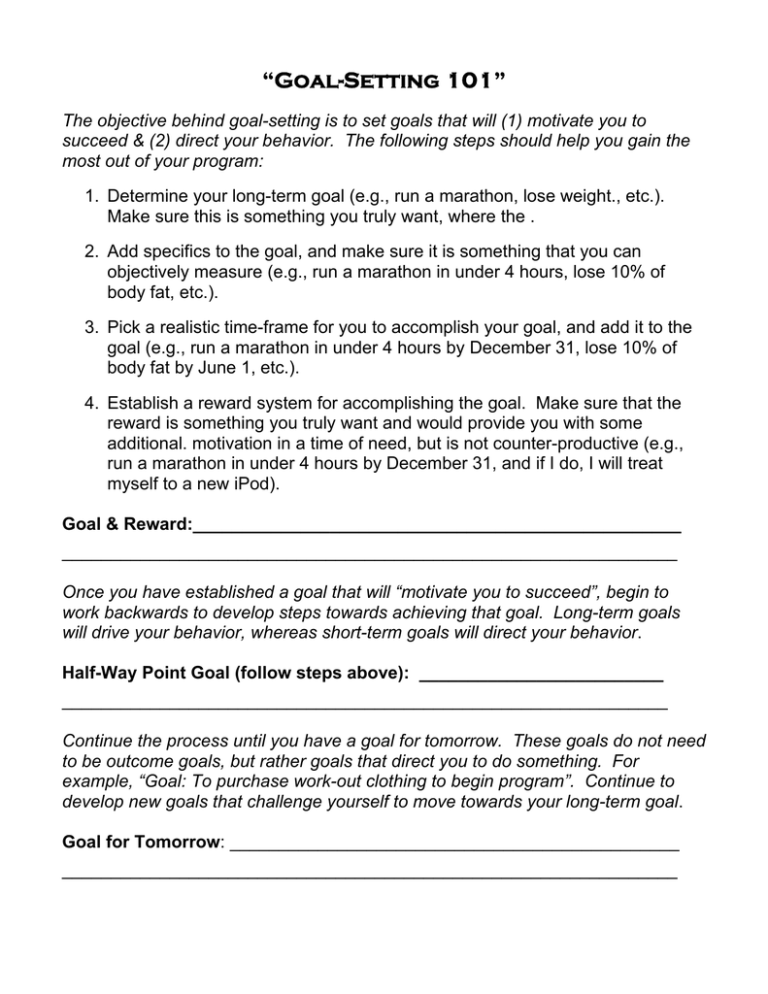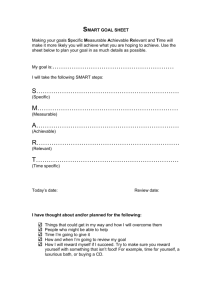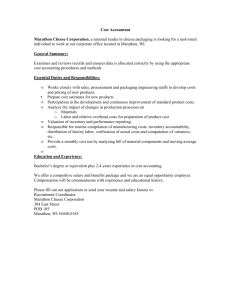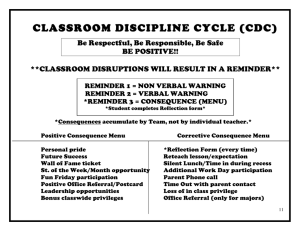“Goal-Setting 101”
advertisement

“Goal-Setting 101” The objective behind goal-setting is to set goals that will (1) motivate you to succeed & (2) direct your behavior. The following steps should help you gain the most out of your program: 1. Determine your long-term goal (e.g., run a marathon, lose weight., etc.). Make sure this is something you truly want, where the . 2. Add specifics to the goal, and make sure it is something that you can objectively measure (e.g., run a marathon in under 4 hours, lose 10% of body fat, etc.). 3. Pick a realistic time-frame for you to accomplish your goal, and add it to the goal (e.g., run a marathon in under 4 hours by December 31, lose 10% of body fat by June 1, etc.). 4. Establish a reward system for accomplishing the goal. Make sure that the reward is something you truly want and would provide you with some additional. motivation in a time of need, but is not counter-productive (e.g., run a marathon in under 4 hours by December 31, and if I do, I will treat myself to a new iPod). Goal & Reward:__________________________________________________ _______________________________________________________________ Once you have established a goal that will “motivate you to succeed”, begin to work backwards to develop steps towards achieving that goal. Long-term goals will drive your behavior, whereas short-term goals will direct your behavior. Half-Way Point Goal (follow steps above): _________________________ ______________________________________________________________ Continue the process until you have a goal for tomorrow. These goals do not need to be outcome goals, but rather goals that direct you to do something. For example, “Goal: To purchase work-out clothing to begin program”. Continue to develop new goals that challenge yourself to move towards your long-term goal. Goal for Tomorrow: ______________________________________________ _______________________________________________________________ Goal-Setting Tips • Set short-term goals • Make sure your goals direct your behavior. If your goal doesn’t tell you to do anything, it is not going to be effective. • Set goals for multiple aspects of your program (fitness, nutrition, organization, etc.). • Do not set too many goals, as they will each lose some of their effectiveness. • Write your goals down, and share them with someone of importance to you. We are always more driven to achieve when we are accountable. • Make sure to set SMART-ER goals: o Specific: State exactly what you want to occur. o Measurable: If you can’t measure it, how do you know if you achieved it or not? o Attractive: Make sure these are goals that YOU want to achieve. o Realistic: Make your goals challengine, but be sure that it is something you could actually achieve. o Time-Constrained: Put a time limit on achieving the goal. o Evaluate: Make sure to continue to examine your goals to make sure they are appropriate. Revise as necessary. o Reward: Most of us won’t put forth effort unless there is something at the end of the rainbow! Most of us say that our goal is to “get in better shape”, but this does not direct our behavior. A SMART-R goal might be to “go for a 30 minute walk every other day this week. And if I do this, I will go to a movie to reward myself”. ____________________________________________________________________________ ____________________________________________________________________________ ____________________________________________________________________________






